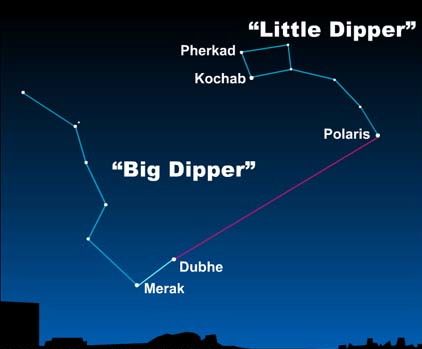Astrophotography Tips
If you are interested in astrophotography, there are 3 things you want to take into consideration about the environment before you drive hours to a location or plan a night out.
1) What is the light pollution level where your location is?
2) What is the phase, rise, and set of the moon?
3) What is the weather going to be?
4) Grab extra batteries for all your equipment (cameras, any lighting, special devices)
5) Finding Polaris (North Star)
1) Light Pollution
You can drive a good ways out of town and still have your shots overcome by the city lights if the city is large enough. I live in a relatively small city (~160k) in comparison to metropolis’s I’ve lived in (~2-3M), and I still have to drive well over 50 miles out of town to get away from the glow and light funnel that the city generates. There is are known dark sites (very little to zero light pollution) around the world other photographers have found and share with others to help with this specific problem. That site is Dark Site Finder. All you have to do is find the best location for your outing and make a night of it.

2) The Moon Phase
Finding out when the new moon is fairly elementary; all you have to do is check online and see exactly when the moon rises, sets, and what phase it’s in. A good site I have used in the past is Time & Date - Moon Phases. There you can easily see if the moon will be an issue or not and plan accordingly.
3) The Weather
This issue is a fickle one; finding out the temperature is easy, but it can be warm outside and if it’s overcast, your night is ruined. Forecasting has come a long way and can be fairly accurate, but the main thing you want to find out is the cloud conditions. You want the sky free of clouds, smoke, or anything else that will blur your images. I found a site that has been reliable for cloud cover called Wundermap. This site allows you to see forecasts of cloud cover, smoke, storms, and many other conditions in a given time frame, past or future.

4) Finding Polaris (The North Star)
Finding Polaris is very important if you are doing any type of time-laps photography or distant tracking. If you do not align your camera or tripod base with Polaris (the north star) you will quickly learn that all your stars look like trails instead of getting distant light for a clear image. You can use a star tracker that is aligned to Polaris to take longer shots than you can with just using a tripod.

5) Extra Batteries for equipment
This tip can not be stressed enough, sometimes you will have weather or situations change that will require you to spend much of the night out to get a good image, so be sure all your equipment has enough battery power to last the duration. Grab extra batteries for your camera, special lighting, special devices that you might be using for shots, anything that requires batteries, you should try to have extra juice for.
Armed with these helpful sites and tips, you are well on your way to capture some great and creative images. If you are interested in taking a class or learning more about the techniques that are commonly used, you can visit local photography clubs in your area (if there are any available), take an online class or classes, or you can even learn a lot on YouTube from users that could be using the same camera as you do. I did a bit of all-of-the-above option and have found solid success. Now my goal is to create my perfect shot. There is post editing for tiling shots and blending as well, especially if you are trying to catch a far-off galaxy or nebula.
 JD Presents | Development In Reach
JD Presents | Development In Reach